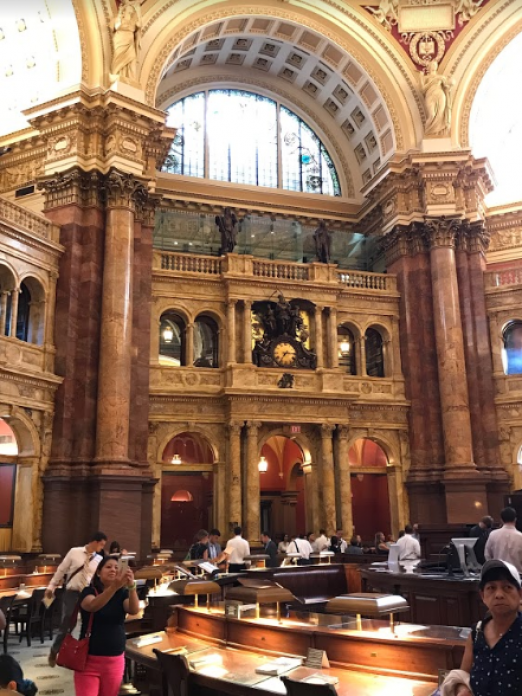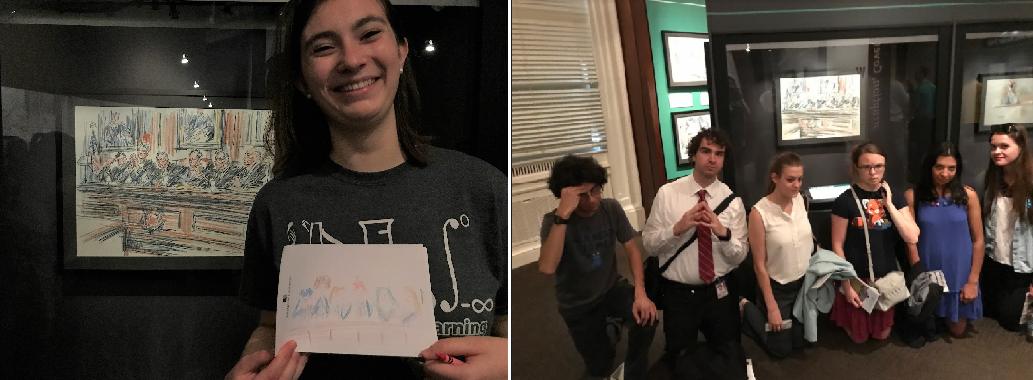Friday, July 28, 2017
By:
There’s only one way to properly explore the Library of Congress: through a scavenger hunt!
This week is a bit more difficult for me to write about since Monday through Thursday was spent writing the article on the National Academies open science study meeting I attended last week, the meeting I used my last blog post to describe. Because of that, I don’t want to bore you by talking about the same information twice, so instead I’m going to tell you about the event some of us interns attended on Tuesday: scavenger hunt at the Library of Congress!
Six of us (including one intern’s co-worker) joined us for the activity, and we ended up competing in the event as one large group. At the entrance we were given a starting clue, and from there got to explore different rooms in the main library Jefferson building by following where the clues led.
To receive the next clue, we completed a task in each area. Though I can only speak for myself, I’m sure all the interns can agree the best room by far was the new exhibit “Drawing Justice: The Art of Courtroom Illustrations.”
The exhibit opened this year on April 27, and will be open until October 28. The exhibition pulls from the Library’s collection of more than 10,000 courtroom drawings to provide a look in to high-profile court cases from the last 50 years, starting with the work by Howard Brodie of the Jack Ruby trial in 1964 (Ruby killed Lee Harvey Oswald, the suspected murderer of President John F. Kennedy).
There are 98 illustrations on display, representing a wide variety of trials that include murder, terrorism, political activism, and landmark legal issues. These cases shaped how Americans perceived race and race relations, religion, gender issues, and the role of celebrities in society.
When the seven of us arrived, we were told the activity we must complete was to select one of the illustrations and pose like the figures in the drawing while one group member drew the result. After looking through some options, we decided on the en banc appellate court hearing that ruled on the U.S. Department of Health, Education, and Welfare (HEW) appeal against the state of Maryland on the issue of school desegregation. An “en banc” case means a case where all the judges of a court hear a case rather than a panel selected from among them. In this case, there were seven judges, but only six are shown in the illustration since one judge died before the opinion was issued. Since there were seven people in our group, that number worked out perfectly: six posing, and the “dead” one doing the drawing!
Tomorrow morning I arranged a private tour of the Library for all the interns, and I can’t wait to see some of the behind-the-scene secrets of the Library’s operations!
Lisa McDonald


